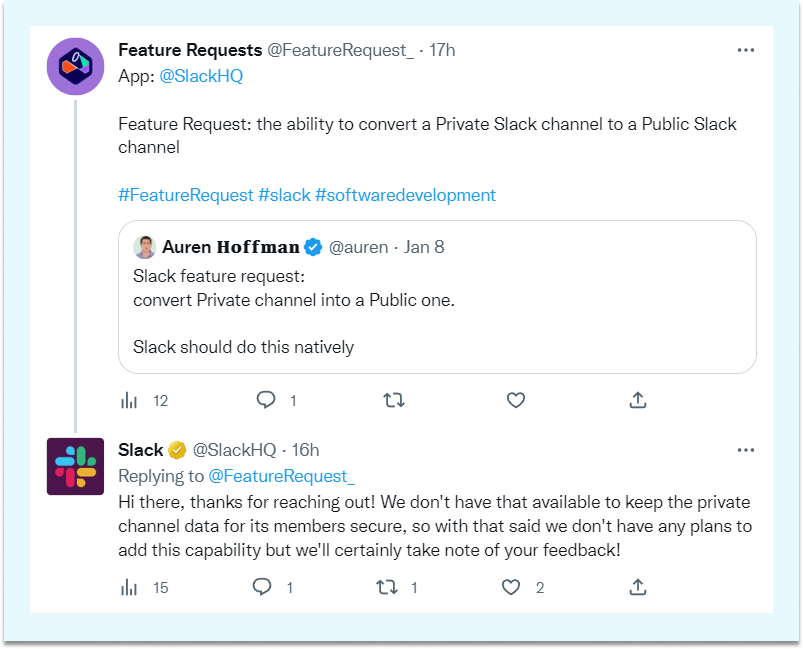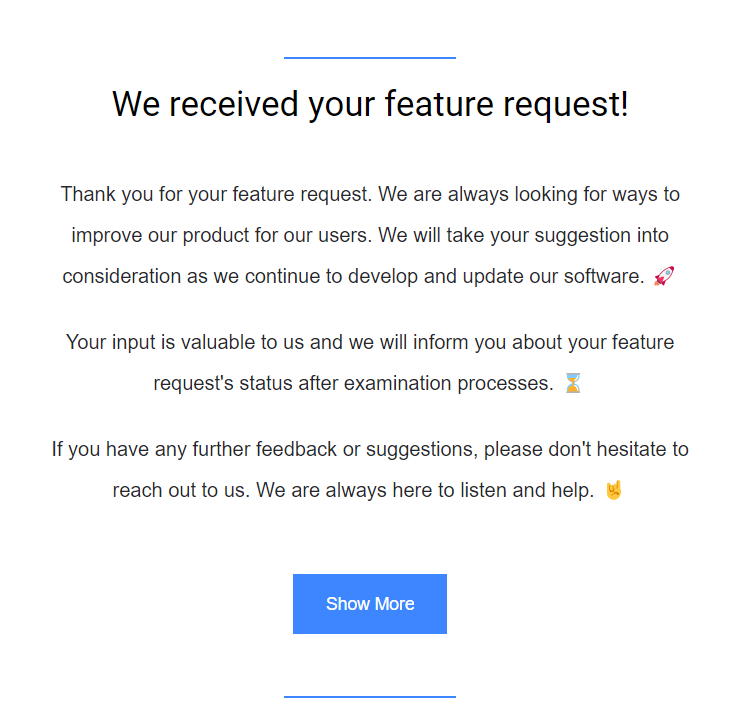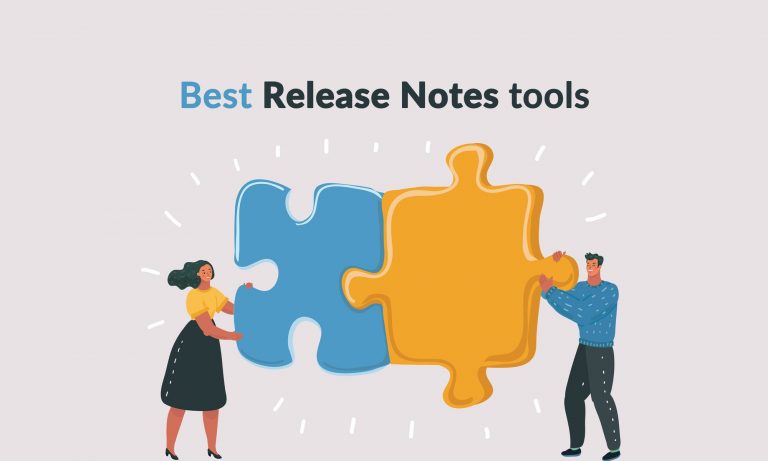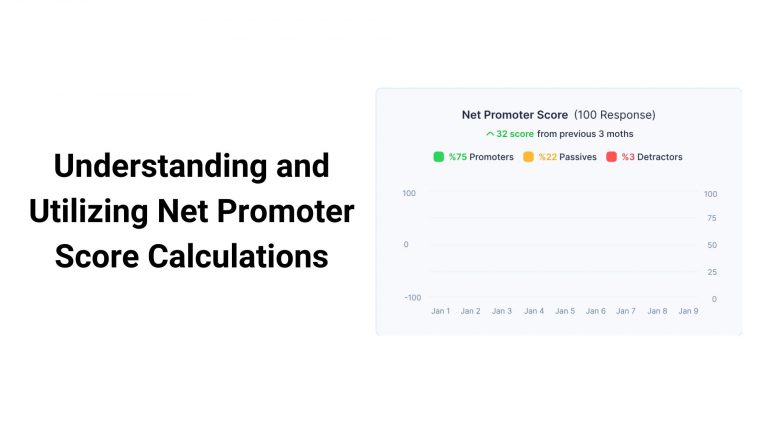For some SaaS company product managers and users, feature requests may seem simple. For others, knowing what users need and sharing information with consumers may seem far-fetched.
With these simple feature request tips, learning how to delicately balance customers’ needs and wants with your team’s resources and capabilities is possible.
Learn how to effectively collect, prioritize, and handle feature requests to maximize their potential by implementing a handful of feature request tips.
Table of Contents
- What Is a Feature Request?
- 4 Main Types of Feature Requests
- 6 Feature Request Tips To Ensure Company Success
- Tips on How To Inform Users of a New Feature
- Manage Feature Requests and Implement These Feature Request Tips With AnnounceKit
What Is a Feature Request?
A feature request is a request from a user or customer for a new function or feature to be added to a software application or SaaS product. These requests are typically made because the user believes the new feature would be beneficial or even necessary for the product to work effectively.
Most often, feature requests are made by users who have identified a gap in the functionality of a product and feel a small change would improve the overall experience. Typically, they’re considered and prioritized by company developmental teams. If implemented, a release of the update is put out so users are aware of the change.
4 Main Types of Feature Requests
Users will provide feature requests to a product’s team, and that team will organize them into one of four categories. From there, the requests are prioritized and slowly implemented if the team believes they’re beneficial.
The four types of feature requests are:
- Enhancements:
These requests involve improving or adding to existing features in a product or service. For example, a customer might request that a website include a search function to make it easier to find specific content.
- New Features:
These requests involve creating entirely new features or functionality in a product or service. For example, a customer may request that a mobile app include a feature that allows them to track their daily exercise routines.
- Integrations:
These requests involve joining a product or service with other tools in the system. For example, customers might request that a customer relationship management (CRM) system be integrated with their email marketing platform.
- Bug Fixes:
These requests involve resolving issues or defects in a product or service. For example, a customer might report a bug in a software application that causes it to crash when specific actions are taken.
6 Feature Request Tips To Ensure Company Success
Managing feature requests can be tricky without the right tools and processes in place to help keep things organized and running smoothly.
AnnounceKit offers a handful of tools and features that make the system easy to follow for both users and product development teams.

Quick Setup, Easy to Use, and Many Integrations
Manage your product announcements from a single place and easily distribute them
across multiple channels.
#1: Establish a Process
Create a system for how you’ll collect, review, prioritize, and follow up on feature requests.
Effective Strategies for Collecting Feature Requests
To improve your product and retain users, you need to understand what your users want and need. Make sure the processes are simple. Utilize these strategies for collecting feature requests:
- Surveys: Create a survey to distribute via email or as a pop-up on your application to ask your users about the features and improvements they’d like to see.
- User interviews: Use this method to collect detailed and qualitative feature requests. You might reach out to users who interact with your product the most and ask about their experience, what they like and dislike, and what they’d like to see added.
- In-app requests: Implement an in-app feedback button or form that allows users to submit feature requests without leaving the app.
- Community forums or social media groups: Create a space where users can post requests and discuss new feature ideas amongst their community. Below is an example of a Slack user mentioning a feature request on Twitter, and Slack responding to it directly.

How Do You Prioritize Feature Requests?
Create a system that allows product teams to decide which feature requests stay, which ones can go, and in what order you’ll work on implementation.
- Create a voting system: Allow your team to vote on feature requests to better understand what might be needed the most according to your customers.
- Ice Prioritization Framework: As a popular way to prioritize SaaS feature requests, this framework works with three main criteria to help understand the importance of each feature and decide which ones should be implemented first:
- Impact – A higher score is given to the feature request that will likely bring in more money or make customers happier.
- Trust – A feature request that is simple to implement will receive a higher score.
- Effort – A feature request that requires a significant amount of time and resources will be awarded a lower score.
Product teams must assign scores for all three criteria on a scale of 1-10, with 10 being the highest score. After all feature requests are scored, they can be ranked according to their total score. The feature request with the highest score should be given priority.
#2: Create a Personal Response
When your SaaS company receives a feature request, you should respond so your customers know their opinions are heard and valued.
How do you respond to a feature request?
Be personal and polite, letting the customer know you received the request and appreciate the time it took to submit it.
No matter if the request is a great idea or a terrible idea, acknowledge it and explain the process the feature request must go through before deciding if it will be implemented. Avoid giving false hope that the feature request will be implemented, but let the customer know it is being addressed and thank them appropriately.
#3: Create a Public Roadmap
Take time to create a publicly displayed roadmap so customers know what to expect from your product and future upcoming updates. This helps users know their feature requests are heard and the product development team is working on improving their experience.
#4: Spend Time Analyzing Trends
As your company receives feature requests, take time to categorize them and find common patterns and trends. Consider user feedback, highly requested features, and features that come from important customer segments. Then, evaluate the impact each feature request will have on the user’s experience, customer satisfaction, and the overall goals of your business.
#5: Identify Potential Solutions
Before creating new features or fixing something a user claims to be a need, consider the possible solutions. Ask yourself:
- Will solving a feature request positively impact your product? Your business?
- Will it resonate with other customers and users?
- Will it cost you more than it’s worth?
- Do you have the right resources to implement this feature request?
#6: Discuss With Relevant Stakeholders
Once you’ve collected, analyzed, and prioritized all feature requests, you must be transparent and collaborative with your company’s stakeholders. Not only should they know what’s going on within a company they’re a (big or small) part of, but they could offer insight you might not have already considered.
When discussing feature requests with stakeholders, consider the following:
- Be sure there is a mutual understanding. The stakeholders know the reason for the feature request and your team understands their vision and expectations.
- Share your process behind evaluating and prioritizing feature requests and how you landed on a specific one.
- Seek input to ensure a stakeholder’s perspective is considered in making a well-rounded decision.
- Collaborate regularly to keep everyone in the loop and address any challenges you might be facing.
Tips on How To Inform Users of a New Feature
Responding to the requests of your users and informing them along the way allows you to satisfy your user base. As a customer of many businesses, you can empathize with this situation.
The rule is simple: Whatever you like as a user, do for your users.
Do you like companies that communicate well? Do that, too. Here’s how:
Tip #1: Send notification emails to your customers that you have received their requests. This way, they know their requests are being considered instead of getting lost in the internet universe.

Tip #2: If the requested feature is not clear enough for you to understand the need, do not hesitate to ask follow-up questions.
Tip #3: Not every feature request is a true need. Sometimes, a feature request might already exist and the user just doesn’t know about it. If you’re not planning to implement a feature request, let the user know that.
Tip #4: Inform your customers about the status of requests and updates. You might consider creating a page just for updates, implementing push notifications, or publishing regular release notes.
Manage Feature Requests and Implement These Feature Request Tips With AnnounceKit
You’ve heard all the tips, now you’ve got to run with them. But how?
AnnounceKit allows companies and users to communicate with one another using a variety of features all in one place. Companies can create and deliver any necessary announcement with a simple and customizable interface, including new features, updates, news, and more.
By easily integrating AnnounceKit’s widgets into your company’s website, your users can send feedback, submit feature requests, and communicate with your team when needed.
With our feature request tool, users can share requests with teams. In return, your team can publish a public roadmap to let your users know what features are in the works and what will be added to the product in the future.
Let AnnounceKit help you manage feature requests to help your company grow. Get started today.

Quick Setup, Easy to Use, and Many Integrations
Manage your product announcements from a single place and easily distribute them
across multiple channels.






